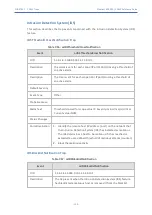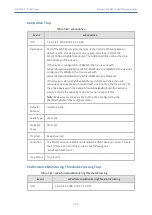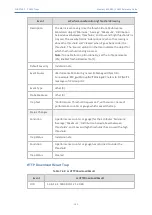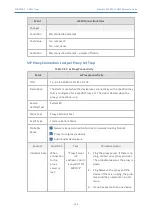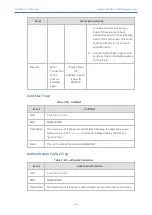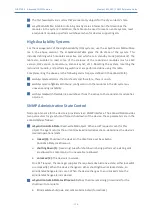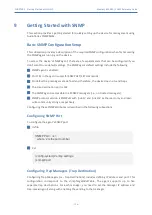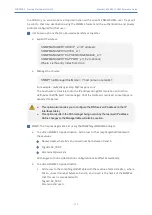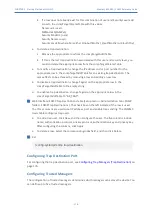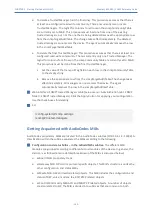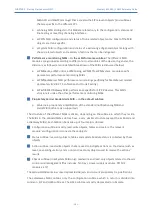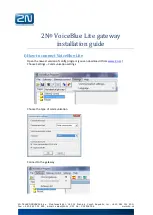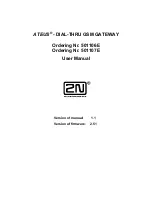
CHAPTER 8 Advanced SNMP Features
Mediant 800 SBC | SNMP Reference Guide
8
Advanced SNMP Features
This section describes advanced SNMP features.
SNMP NAT Traversal
A NAT placed between the device and the element manager calls for traversal solutions:
■
Trap source port:
all traps are sent from the SNMP port (default is 161). A manager
receiving these traps can use the binding information (in the UDP layer) to traverse the
NAT back to the device. The trap destination address (port and IP) are as configured in the
snmpTargetMIB.
■
acKeepAliveTrap:
this trap is designed to be a constant life signal from the device to the
manager, allowing the manager NAT traversal at all times. The acBoardTrapG-
lobalsAdditionalInfo1 varbind has the device’s serial number.
The destination port (i.e., the manager port for this trap), can be set to be different than
the port to which all other traps are sent. To do this, use the acSysSNMPKeepAliveTrapPort
object in the acSystem MIB or the KeepAliveTrapPort ini file parameter.
The Trap is instigated in three ways:
●
Via an ini file parameter [SendKeepAliveTrap] = [1]. This ensures that the trap is
continuously sent. The frequency is set via the 9/10 of the
[NATBindingDefaultTimeout] parameter or MIB object acSysSTUNBindingLifeTime.
●
After the STUN client has discovered a NAT (any NAT).
●
If the STUN client cannot contact a STUN server.
The two latter options require the STUN client be enabled (ini file parameter
[EnableSTUN]). In addition, once the acKeepAlive trap is instigated it does not stop.
■
The manager can view the NAT type in the MIB: audioCodes(5003).acProducts
(9).acBoardMibs(10).acSystem(10).acSystemStatus(2).acSysNetwork(6).acSysNAT
(2).acSysNATType(1)
■
The manager also has access to the STUN client configuration: audioCodes
(5003).acProducts(9).acBoardMibs(10).acSystem(10).acSystemConfiguration
(1).acSysNetworkConfig(3).acSysNATTraversal(6).acSysSTUN(21)
■
acNATTraversalAlarm: When the NAT is placed in front of a device that is identified as a
symmetric NAT, this alarm is sent. It is cleared when a non-symmetric NAT or no NAT
replaces the symmetric one.
Systems
For the management of a system (a chassis with more than one type of module running), the
acSystem/acSystemChassis subtree in the acSystem MIB should be used:
- 173 -

